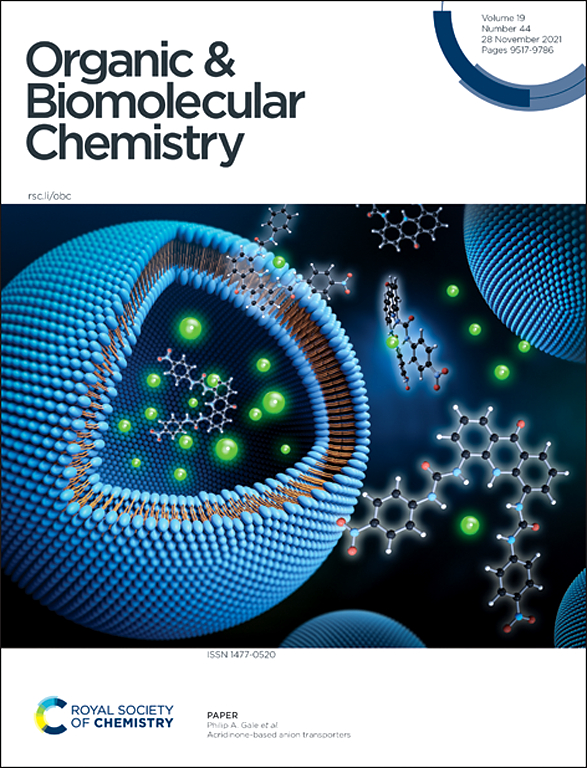基于 CADD 策略设计抗 HIV-1 的盘绕 N 肽。
IF 2.7
3区 化学
Q1 CHEMISTRY, ORGANIC
引用次数: 0
摘要
几十年来,人类免疫缺陷病毒(HIV)一直危害着人类健康,并对全球卫生防护工作产生了重大影响。肽类融合抑制剂作为高活性抗逆转录病毒疗法(HAART)的重要组成部分,能够有效预防和控制艾滋病的流行。然而,目前市场上的领军药物恩夫韦肽在临床应用中面临着诸多挑战。在此,我们利用 SWISS-MODEL 和 HDOCK,设计出了最先进的人工 N 肽开发策略。活性最高的化合物 IZNP02QE 超越了阳性对照,对 HIV-1 具有显著的纳摩尔级抑制活性。机理研究揭示了 IZNP02QE 通过形成杂聚物破坏关键的内源性 6-螺旋束(6-HB)的能力,强调了其作为新型抗 HIV-1 药物的潜力。这项工作不仅开创了一种新的 N 肽设计方法,而且为设计基于肽的融合抑制剂的 CADD 策略提供了可能性。本文章由计算机程序翻译,如有差异,请以英文原文为准。

Design of coiled-coil N-peptides against HIV-1 based on a CADD strategy†
Human Immunodeficiency Virus (HIV) has continued to endanger human health for decades and has a substantial impact on global health defence. Peptide-based fusion inhibitors, as an integral part of Highly Active Anti-Retroviral Therapy (HAART), are effective in preventing and controlling the AIDS epidemic. Nevertheless, the current market leader, Enfuvirtide, is facing numerous challenges in clinical application. We herein devised a cutting-edge development strategy leveraging SWISS-MODEL and HDOCK, enabling the design of artificial N-peptides. The most active compound, IZNP02QE, surpassed the positive control by demonstrating remarkable nanomolar-level inhibitory activity against HIV-1. Mechanistic investigations unveiled IZNP02QE's ability to disrupt the crucial endogenous 6-helix bundle (6-HB) by forming heteropolymers, underscoring its potential as a novel anti-HIV-1 agent. This work not only pioneers a novel design methodology for N-peptides but also opens up the possibility of a CADD strategy for designing peptide-based fusion inhibitors.
求助全文
通过发布文献求助,成功后即可免费获取论文全文。
去求助
来源期刊

Organic & Biomolecular Chemistry
化学-有机化学
CiteScore
5.50
自引率
9.40%
发文量
1056
审稿时长
1.3 months
期刊介绍:
Organic & Biomolecular Chemistry is an international journal using integrated research in chemistry-organic chemistry. Founded in 2003 by the Royal Society of Chemistry, the journal is published in Semimonthly issues and has been indexed by SCIE, a leading international database. The journal focuses on the key research and cutting-edge progress in the field of chemistry-organic chemistry, publishes and reports the research results in this field in a timely manner, and is committed to becoming a window and platform for rapid academic exchanges among peers in this field. The journal's impact factor in 2023 is 2.9, and its CiteScore is 5.5.
 求助内容:
求助内容: 应助结果提醒方式:
应助结果提醒方式:


